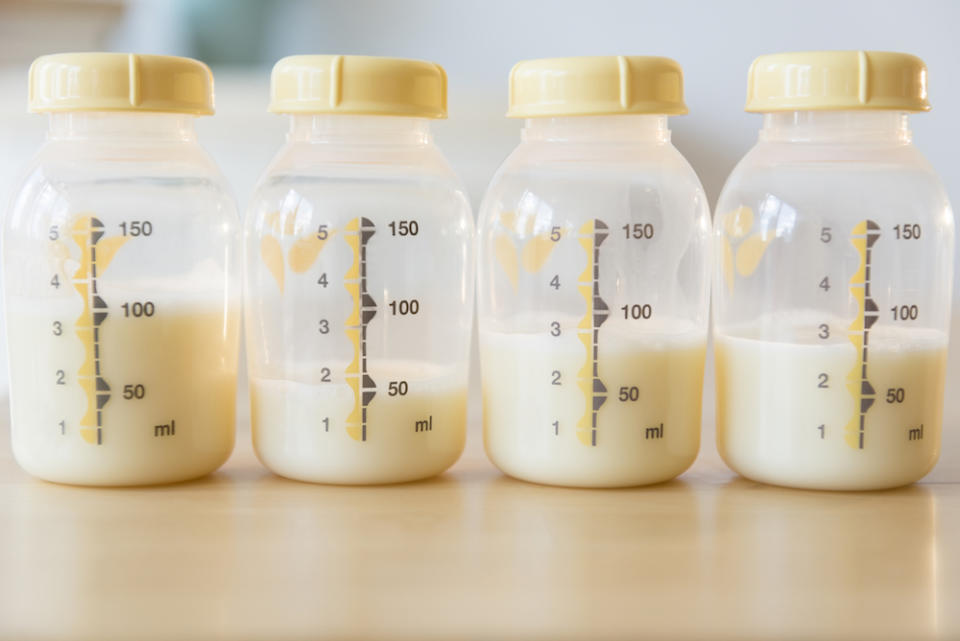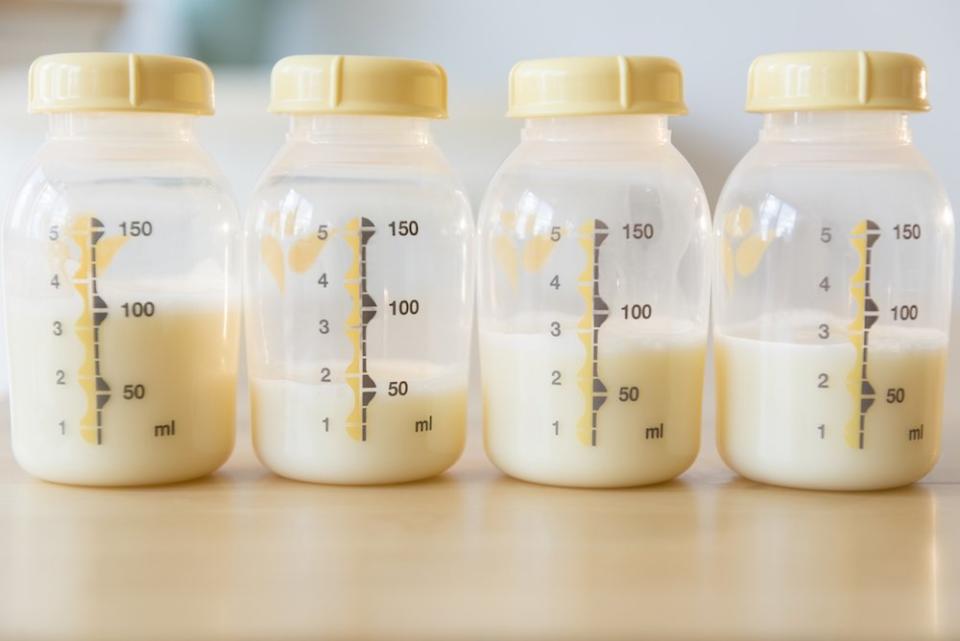Mom's Photo of 'Blue' Breast Milk Goes Viral, Experts Explain the Science Behind this Color Change

May 7, 2019
When Jody Danielle Fisher posted a photo to Facebook last week of her "normal" colored breast milk alongside a bottle of "blue" colored breast milk, she didn't expect it to go viral. But her claim that this "blue" milk, produced two days after her one-year-old daughter received her immunization shots, was an immune response to the vaccinations raised a lot of eyebrows. As she explained, "It's blue from all the antibodies my body is producing as it thinks she's sick with what she was vaccinated against! When she feeds her saliva sends signals to my body to produce more milk with illness specific antibodies!"
Fisher's take on the color change is fascinating for sure, but experts aren't as convinced the color change is a result of vaccinations. "While there is still so much that we don't know about human milk, we do know that breast milk comes in a wide variety of colors and consistencies. The vast majority of those differences are normal," Barbara Cohen, a longtime board-certified lactation consultant in New York City, told Parents.com.
And breast milk can change color for a number of reasons, including the time of day. "The blueish color is most noticeable during the first few minutes of milk expression, when the composition is mostly foremilk," Nancy Hurst, director of Women's Support Services at Texas Children's Pavilion for Women in Houston, told Romper. "As the breast continues to empty, the composition changes to hind milk, which is higher in fat, giving it that creamier color."
RELATED: What's In Your Breast Milk
Hurst added: "A mother may notice this blueish color more when she has gone a longer time between pumpings, say first thing in the morning, when her breasts are fuller. A blueish tint in expressed breast milk is mainly due to the foremilk composition and how the light refracts off of it."
RELATED: All About Your Breast Milk Supply
Fisher responded to suggestions the color change was due to her diet or the time of her pumping session by insisting the blueish breast milk in the viral photo "was expressed straight after a feed" and was not foremilk. She added that she hadn't eaten "anything artificially colored" or had any supplements or green vegetables in the days leading up to the production of her "blue" breast milk. "My milk is only ever this color when my daughter has been sick," she wrote. "It's never been like it when she's been well."
According to the Centers for Disease Control and Prevention, vaccines contain the same germs that cause disease, but these germs have been either killed or weakened to the point that they don’t make you sick. A vaccine does stimulate your immune system to produce antibodies like it would if you were exposed to the disease, but a vaccine gives immunity without actually ever giving the recipient the disease. That said, it would be interesting if Fisher's breastmilk reacted to the antibodies in her recently vaccinated child, however, there is not enough science to back up that claim.
Still, the photo was shared more than 7,000 times and received more than 9,000 comments, many of which were supportive. One commenter said, "One of the reasons why I want to breastfeed." Another wrote, "Absolutely incredible! Truly, our bodies are miraculous."


